When people talk about bamboo, they are likely to mention things like Japanese gardens, privacy hedges and giant grasses. But the term Fargesia doesn’t ordinarily come up right away in conversation. It’s the botanical name for a particular genus of bamboo, but it’s a good one to know about if you’re honing your expertise in bamboo. And it’s especially useful if you want to grow bamboo in a colder climate.
The genus Fargesia is one of about 100 genera in the bamboo subfamily, Bambusoideae. This genus belongs to the tribe of temperate, woody bamboos known as Arundinarieae, as distinguished from the other two tribes of tropical and herbaceous bamboos. Most varieties of Fargesia are native to China, and unlike the vast majority of temperate bamboos, Fargesias are non-invasive clumping species, rather than the more invasive running types. The genus Fargesia is of great importance to the Giant Pandas of central China, who eat nothing but bamboo. And it’s especially important to gardeners in cold climates who are looking for bamboos of the non-invasive variety.
This article — first published in October 2020 and most recently updated in September 2024 — is part of an ongoing series about different types and species of bamboo. To learn more about this fascinating and diverse collection of grasses, check out these other articles.
- Running bamboo
- Clumping bamboo
- Timber bamboo
- Native bamboos of North America: Arundinaria
- Herbaceous bamboo: Olyreae
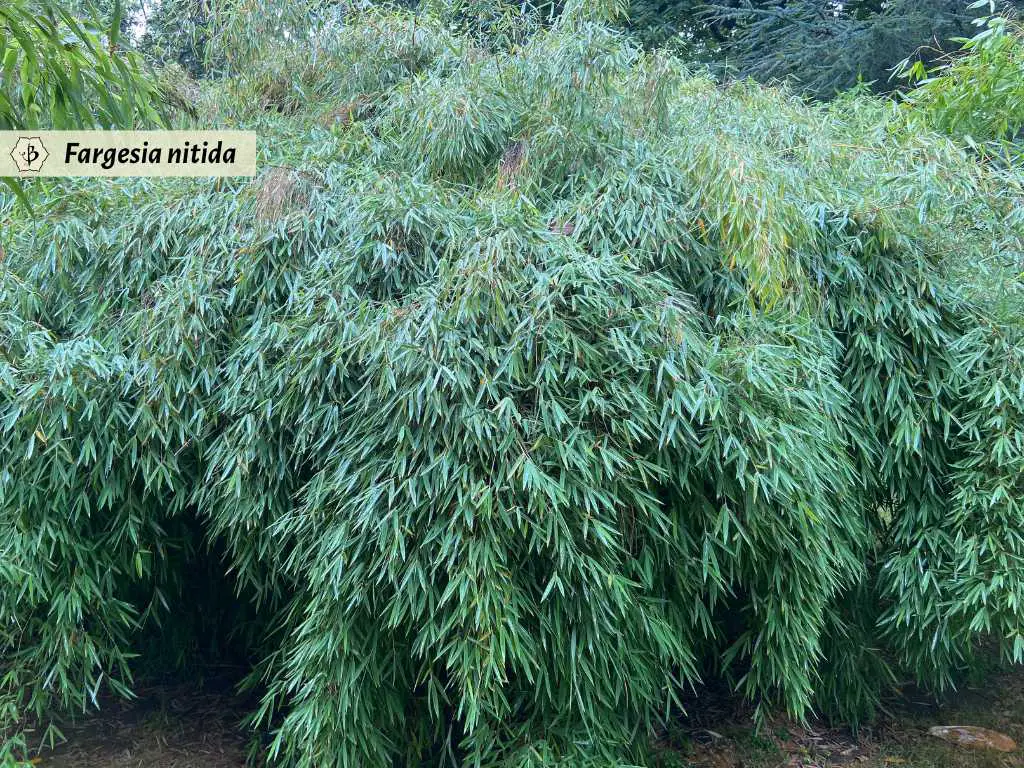
Bamboo classification
The easiest and maybe the most practical way to categorize bamboo is to divide them into two groups, runners and clumpers. This is something of an oversimplification, but it’s a pretty good start. And it’s not all that different from the way that botanists classify bamboo.
In scientific terms, all bamboos belong to the grass family, Poaceae, and they have their own subfamily, Bambusoideae. Within this subfamily, botanists have created three different tribes. One tribe, Bambuseae, includes the tropical woody bamboos, the great majority of which have a clumping rhizome type. The temperate woody bamboos make up another tribe, Arundinarieae, which are primarily running varieties. And the third tribe is something of a botanical footnote, Olyreae, consisting of a few unusual, herbaceous (non-woody) bamboos, from the tropics and subtropics of South and Central America.
The genus Fargesia is one of those anomalies of the plant kingdom that reminds us that all of our botanical classifications are just manmade conveniences. In reality, the natural world is not nearly so cut and dry. For that reason, you’ll find that botanists still argue about where to classify different kinds of bamboo, or whether a certain bamboo is a distinct species or simply a cultivar of another species.
A few other exceptions to the rule include the genera Borinda, Thamnocalamus and Himalayacalamus, cold-hardy clumpers from the Himalayan area. But not all botanists recognize Borinda and Thamnocalamus as distinct genera. Also, the genus Yushania is another outlier, sometimes considered a runner and sometimes a clumper.
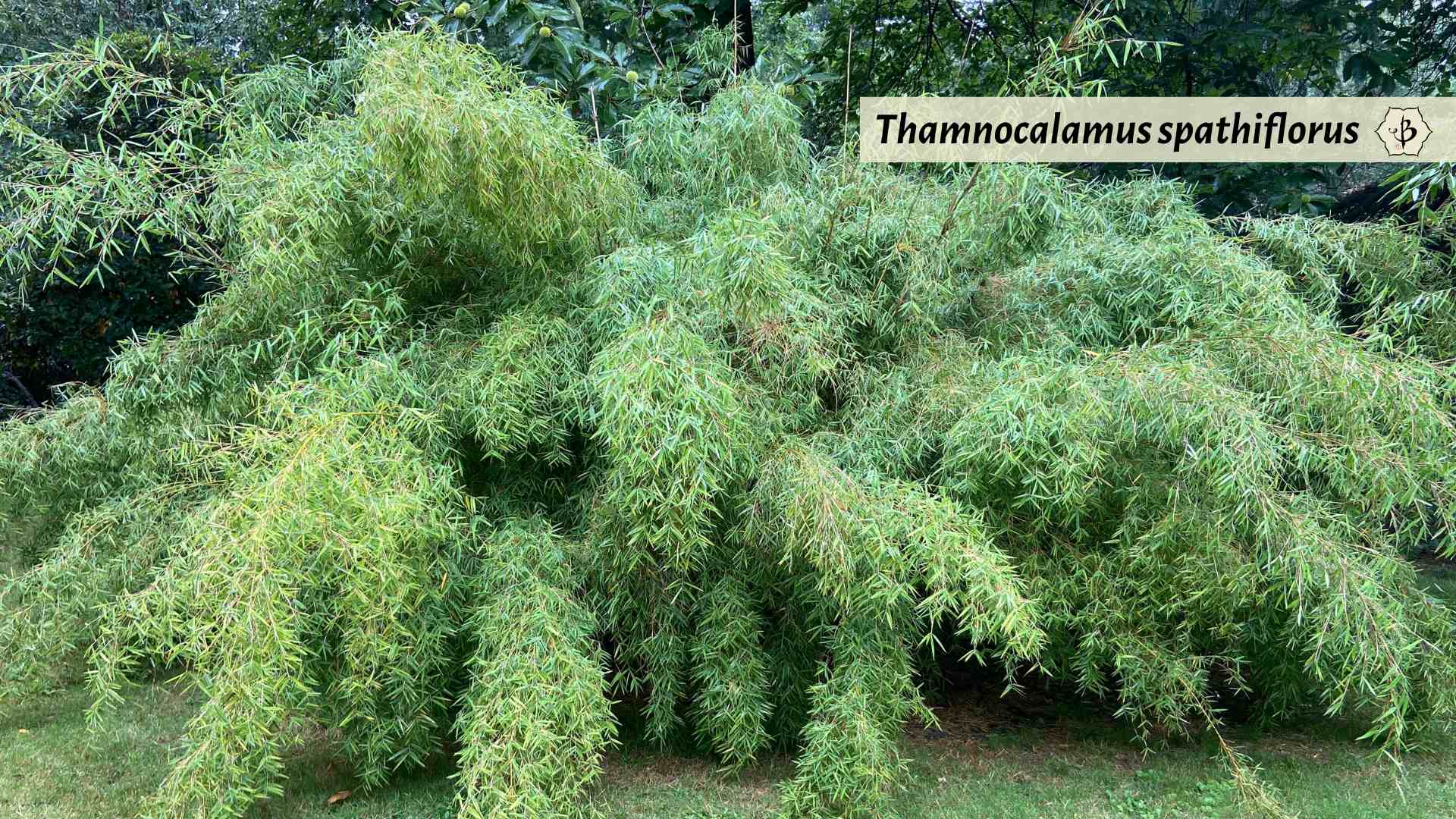
Fargesia characteristics
Most specialists agree that Fargesia belongs to the Arundinarieae tribe of woody, temperate bamboos, and yet the Fargesias have a definitively clumping growth habit. This means that they have pachymorph or sympodial rhizomes, clustering closely together, and bending quickly upwards rather than extending outwards. And yet, unlike other clumpers, they can be cold hardy down to -10º or -20º F.
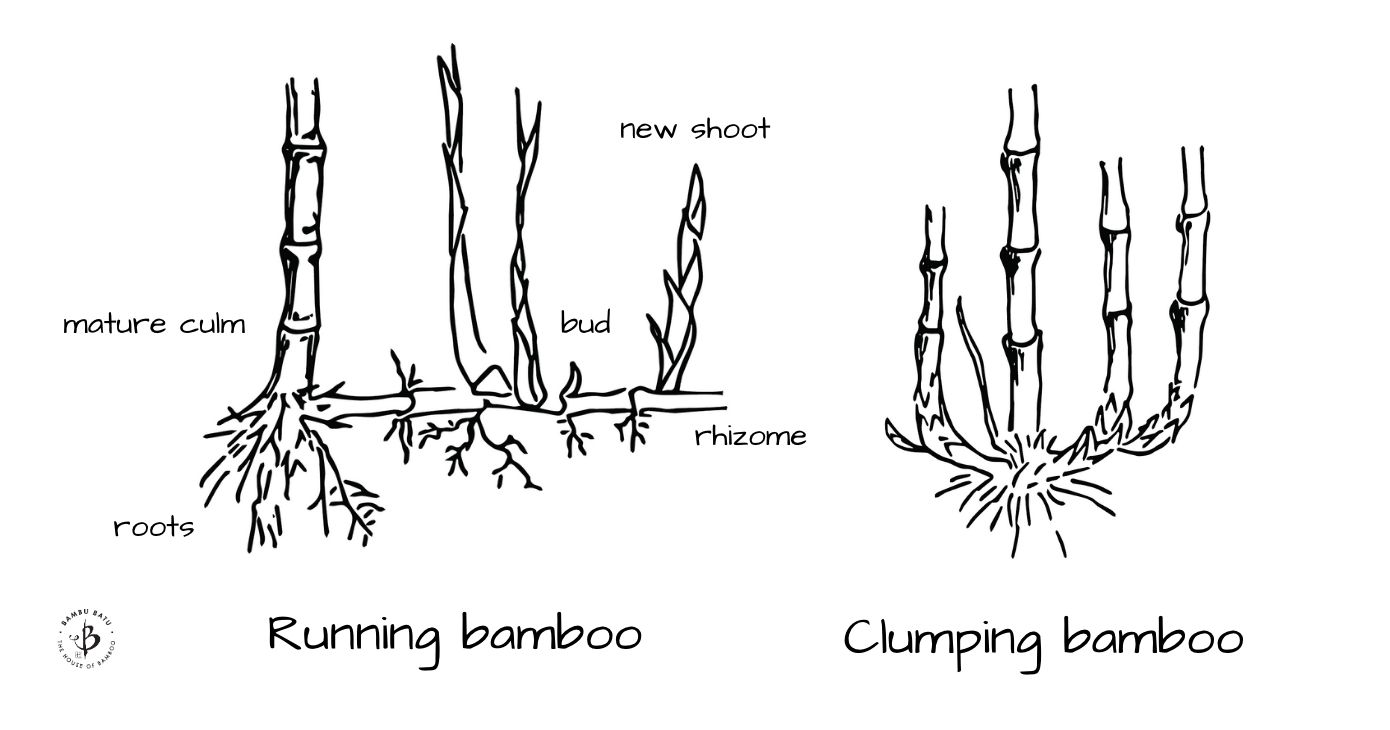
This makes Fargesia one of the only bamboo genera which are both clumping and temperate. The preponderance of clumping bamboos are subtropical, like Bambusa and Chusquea, or tropical, like Dendrocalamus and Guadua. The tropical bamboos are generally not cold hardy below about 30º F, making them difficult to grow anywhere in the contiguous U.S., except in parts of Florida and Southern California. Other clumpers are more subtropical and can be grown in more diverse climate zones, cold tolerant down to 10º or 20º F, depending on the species.
Fargesia is exceptional for having a clumping growth habit while being cold-hardy down to 10 or 20º below 0º F. To learn more about this unusual combination of characteristics, take a look at our article about Clumpers for Cold Climates.
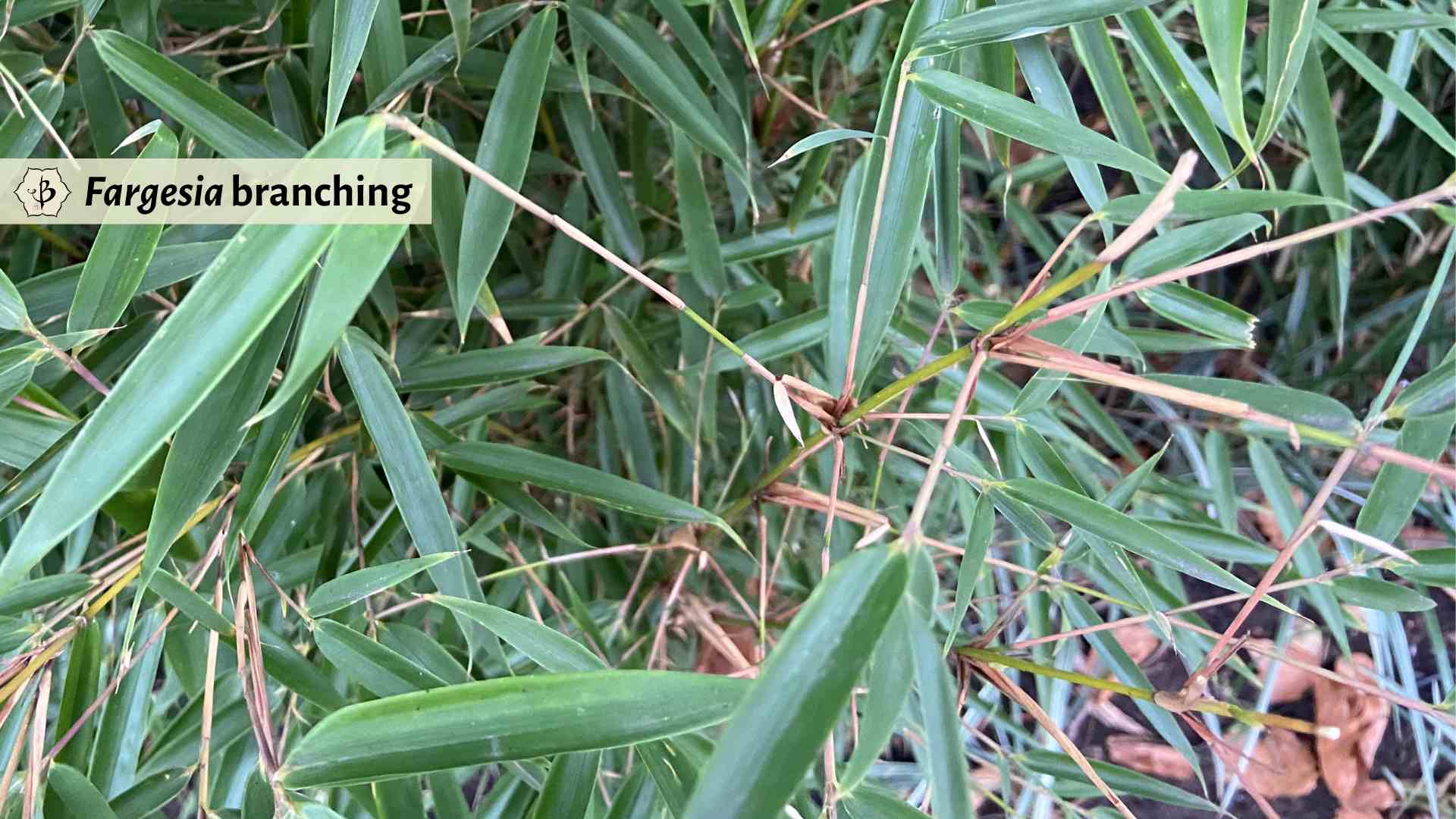
These compact clumpers spread slowly, and the mature plants typically reach a maximum diameter of about 15 or 20 feet. Some varieties only grow a few feet high, and rarely more than 10 feet tall. Culms are slender and arching, which creates a lovely cascading appearance from the dense arrangement of thin leaves. The branching pattern is distinctive, the many small branches at each node, seeming to grow out in all directions.
Fargesia bamboos flower gregariously, or synchronously, meaning that all members of a given species will flower at the same time. Subsequently, the plants go to seed and then die. Large swaths of Fargesia cover areas of the Chinese province of Sichuan, providing essential sustenance for the Giant Pandas native to that region. And when these bamboos have bloomed in the past, it has led to a critical food shortage and something of a crisis for the already threatened pandas.
* FUN FACT: The name Fargesia, unlike a lot of botanical terms, is not Latin for something like “foreign” or “farm fresh”. The genus actually takes its name from the French missionary and amateur botanist, Paul Guillaume Farges, who first identified it in China.
Species in the genus Fargesia
There are nearly 100 species of Fargesia in total, growing mainly in southern and central China, but also in the eastern Himalayas and Vietnam. However, only a handful of species have been naturalized outside of Asia. They are all ideal for cooler climates and for gardeners looking for a more compact species of bamboo. Still, some disagreements persist in the classification, with genera like Borinda and Yushania.
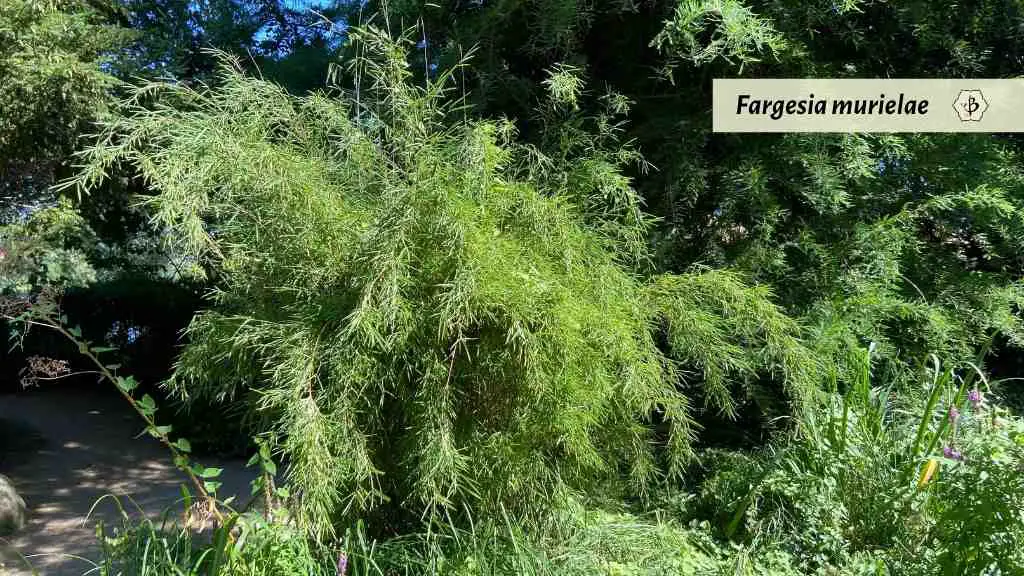
Fargesia dracocephala: “Dragon head bamboo” has thick culms growing to about 10 feet, with a thick, weeping leaf canopy that can provide a good privacy hedge. Not recommended for hot, humid climates, but cold hardy down to -10º F. A popular cultivar of this species is ‘Rufa’, not to be confused which F. rufa, a separate species listed below. A dwarf cultivar of this species is also available, only growing about 6 feet tall, sometimes listed as Yushania confusa.
Fargesia frigida: Compact, bushy, and as the name would suggest, extremely cold-tolerant. Like ther varieties of Fargesia, the foliage is dense but the leaves are thin and wispy. Young culms have a blueish tint with pink-maroon culm sheaths. Plants tend to form a rounded shrub, 6 to 8 feet tall, making it an attractive ornamental. Also listed as Borinda frigidorum.
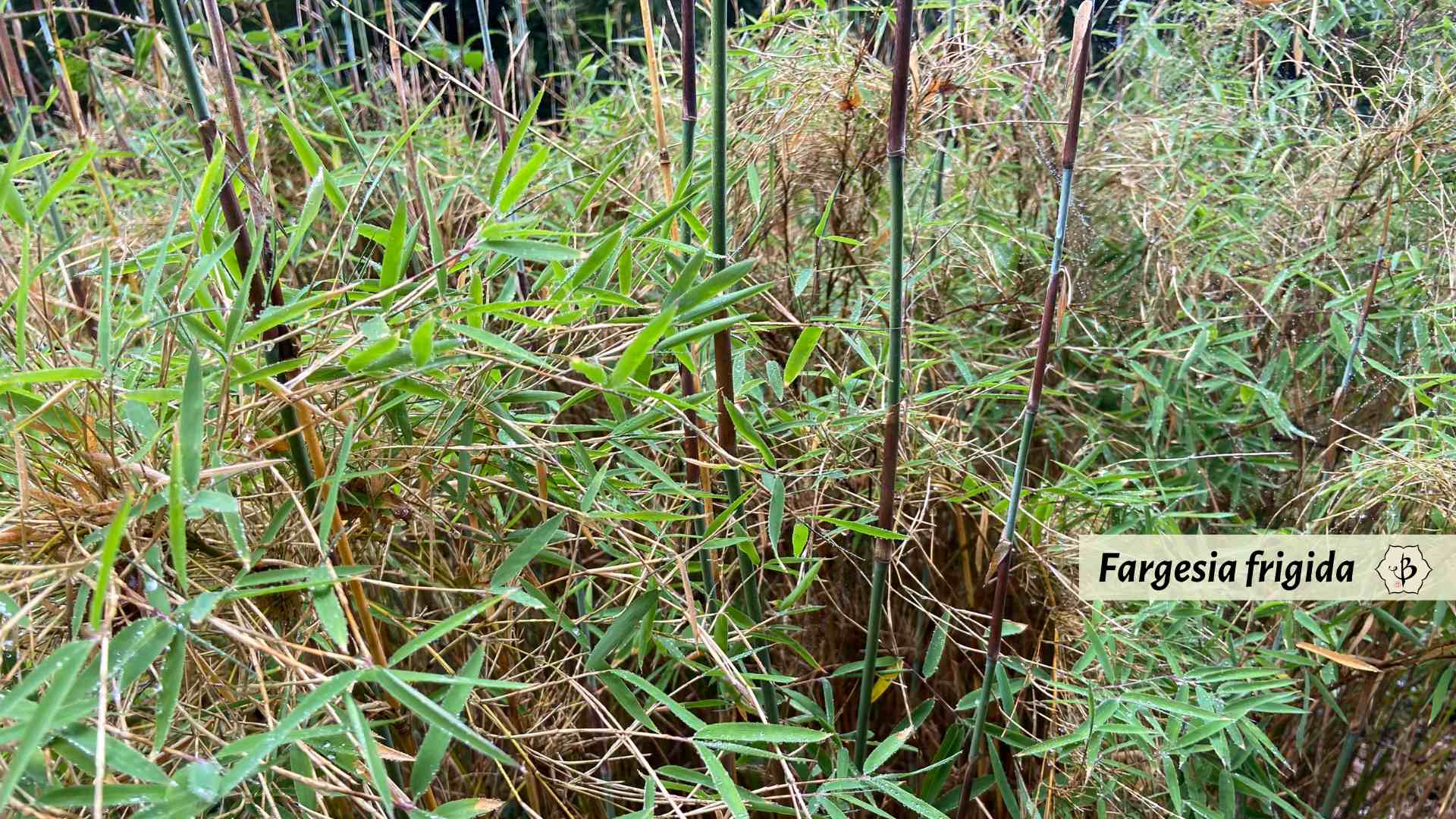
Fargesia gaolinensis: A recently discovered species from Gaolin County in the Yunnan Province of China. Many authors classify it as Borinda gaolinensis, another good example of the confusion endemic to bamboo taxonomy.
Fargesia macclureana: Don’t expect to find this outlier at your bamboo nursery. But it might turn up in the Guinness Book of World Records. Bamboo researchers in China report finding this montane bamboo on the Qinghai-Tibet Plateau at elevations as high as 3,800 meters, or 12,500 feet above sea level. That has to be one for the record books.
Fargesia murielae: Commonly known as “umbrella bamboo”, many consider this to be among the most beautiful varieties for cultivation. New shoots have a light blue hue, turning dark green and yellow with age. Growing this bamboo in a shady area will help preserve the rich blue shade. Thin shoots will get about 12 feet tall, and it’s hardy down to -20º F.
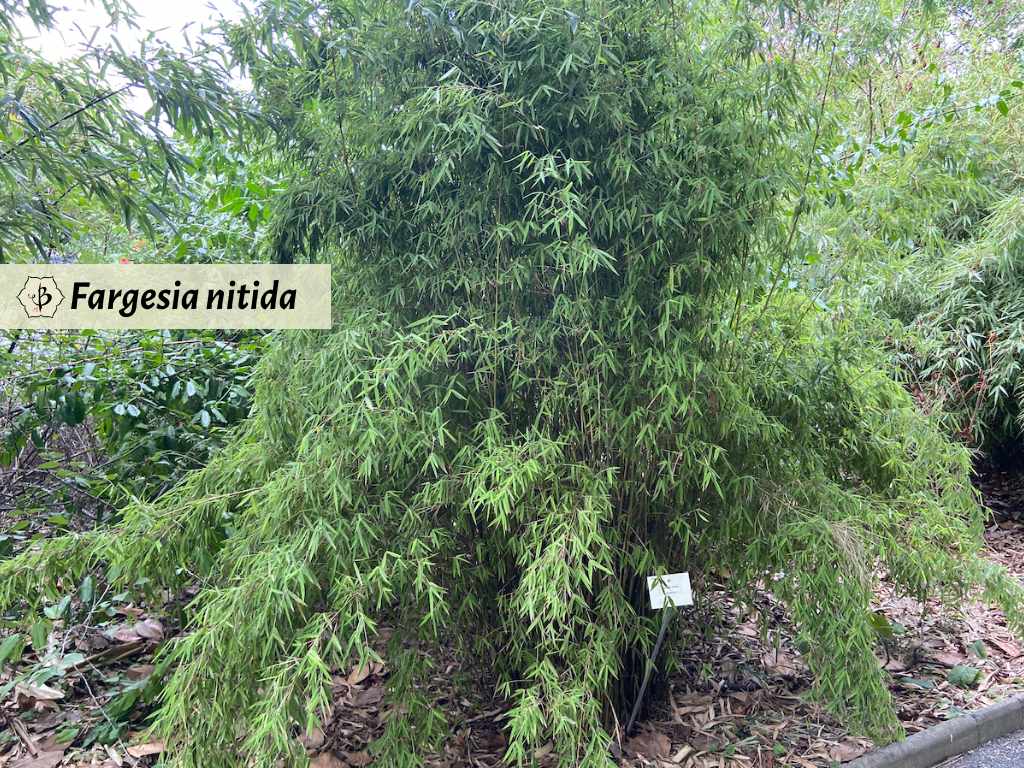
Fargesia nitida: “Blue fountain bamboo” earned its name from the dark purple, bluish culms and the thick, cascading canopy of foliage. Very similar in appearance to F. murielae, except for the coloration of the culms. One-inch poles can get up to about 15 feet tall, and thrive in temperatures as low as -20º F.
Fargesia papyrifera: Sometimes listed as Borinda papyrifera, and better known as Blue Dragon Bamboo, this colorful clumper is native to the high elevations of Southern China and the Himalayas. In good conditions, it can grow up to 15 or 20 feet tall with culm up to 2 inches thick. Powdery blue culms are beautiful in appearance, complemented by vibrant green leaves. An excellent choice in cool climates and in shady areas, this species is not as cold-tolerant as other Fargesias, but still hardy well below 0º F. (See the photo on the left side of the featured image at the top of the article.)

Fargesia robusta: A rare breed of cold-hardy bamboo that grows about 15 feet tall. Shoots start out erect and upright but gradually arch gracefully under the weight of the foliage. Grows well in full sun.
Fargesia rufa: A compact, thick and bushy variety, Rufa much prefers cooler climates, and also does well in partial shade, protected from the afternoon sun. This species is hardy down to -15º F. Thin culms grow to about 10 feet tall.
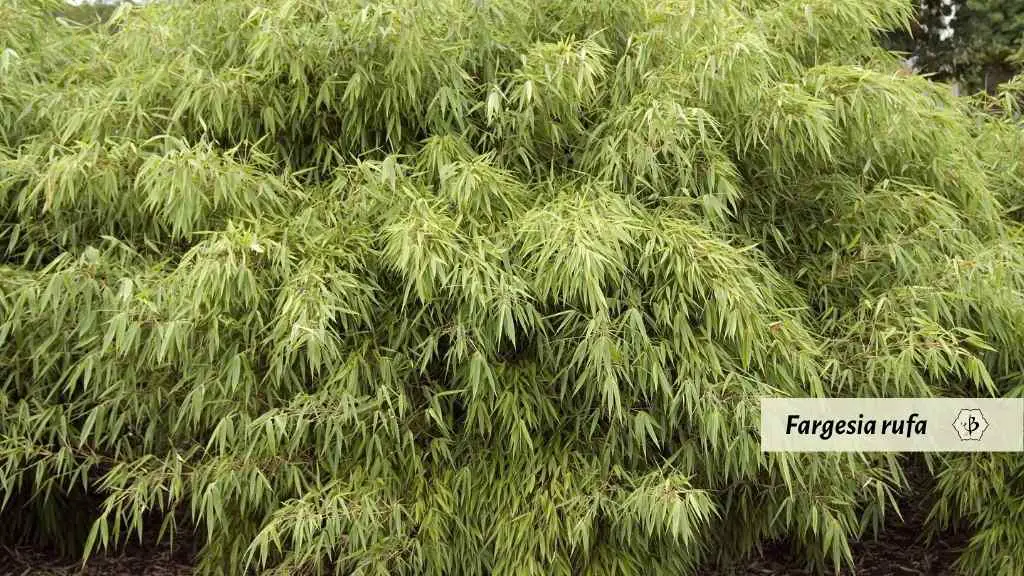
Fargesia scabrida: Another colorful variety, with shoots that come in shades of orange, blue and purple, eventually turning deep green. Also known as the “Asian Wonder,” it grows well in sun or shade, and is hardy to -10º F. Mature plants get 10 or 15 feet tall, with culms less than an inch in diameter. Although it’s a clumper, it does have a more vigorous growth habit. Still, its coloration makes it a favorite among bamboo growers.
Fargesia ssp. ‘Winter Joy’: This exotic new hybrid is a cross of two Fargesia species, resulting in a beautiful specimen with slender green leaves like F. murieliae and dark reddish-purple culms like F. nitida. Like all members of the genus, it is extremely cold-hardy, hence the charming nickname.
Fargesia utilis: A popular ornamental species in the UK, but native to southern China, this bushy clumper forms a stately dome of resplendent foliage. F. utilis can grow larger than other members of the genus, up to 20 feet tall, with colorful reddish culms neary an inch in diameter. Shade tolerant, but full sun will bring out more color on the culms.
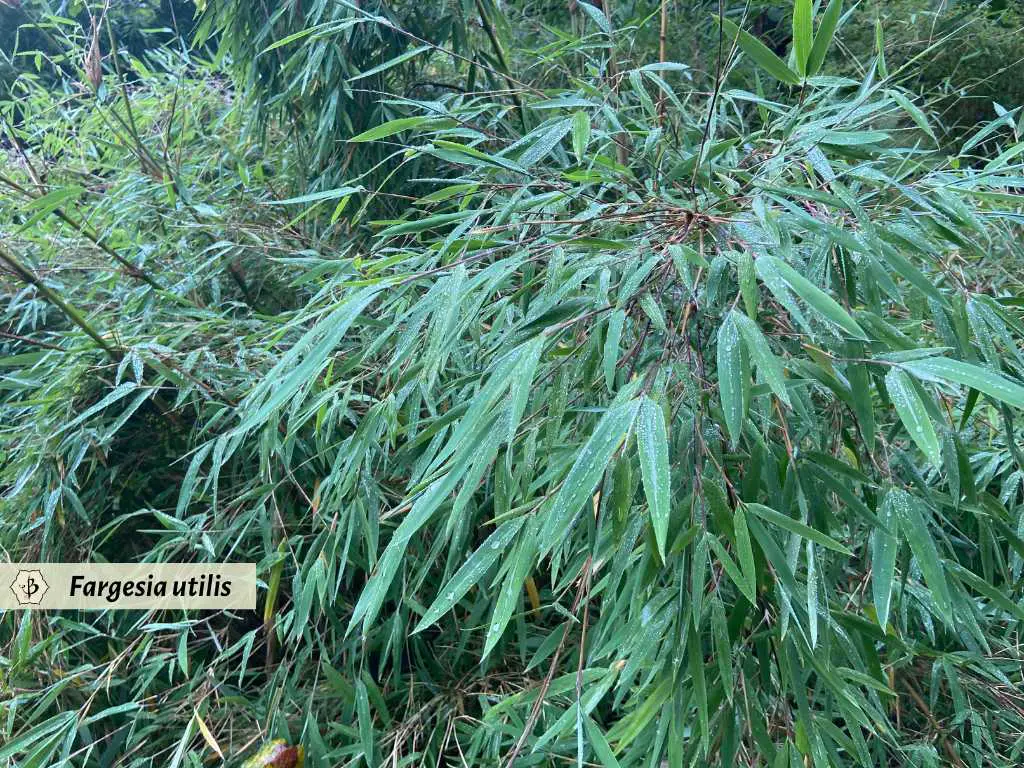
Further reading
If you’d like to learn more about the many uses and varieties of bamboo, take a look at some of our most popular articles.
- Bamboo nurseries of America
- Best bamboo varieties for your garden
- Preparing your bamboo for winter
- Bamboo anatomy: 9 parts of the bamboo plant
- Growing Bamboo: The complete how-to guide
- Bamboo Q & A: Ask the experts
FEATURE IMAGE: Clockwise from left, Fargesia papyrifera in France, Fargesia robusta in Portugal, and Fargesia murielae in Sweden. All photos by Fred Hornaday.

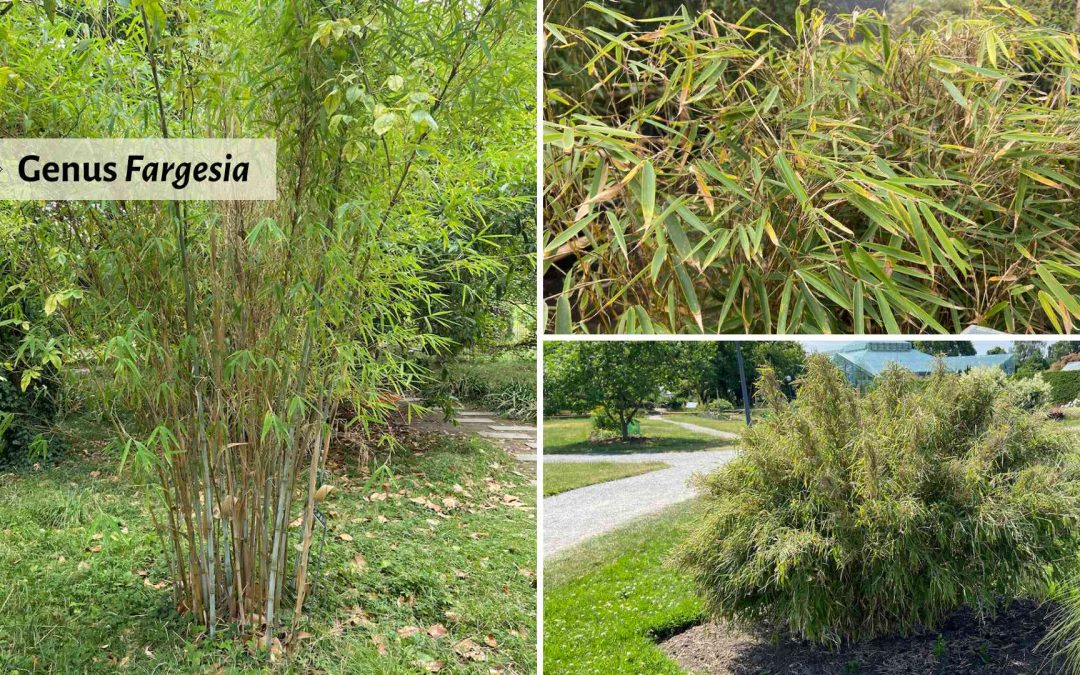
























Can u recommend a clumping bamboo that doesn’t get too wide?
I need it to grow at least 15ft high and winter hardy. We live is SW Pennsylvania. Hopefully a fast growing as our neighbors don’t take care of their property.
Thanks
I would go with Fargesia nitida. Tall, elegant, and colorful culms.
Hi, I’m looking for a species for our food forest that is:
(1) hardy down to at least -10• C and preferably -15.
(2) clumping
(3) with edible shoots
Thanks
I think any species of Fargesia will do, whatever you can get your hands on. For eating, Fargesia shoots and culms are generally very thin, but F. nitida is a bit bigger. I would also consider a smaller variety of Phyllostachys, such as Ph. dulcis or Ph. nuda. These are runners, but they can be contained with a trench. They are very cold hardy, and some of the best for eating.
hello i live in northern alberta canada im looking for a cold hardy bambo to plant this summer what would be the best one to get, thanks, willy
Alberta is tough. Try any of the Fargesias. Murielae is pretty popular in Germany and I’ve seen it growing in Sweden too.
Hello there.
I need a non-running bamboo which will also act as a privacy screen. We live in the countryside with lots of evergreens.
How does bamboo hold up to wildfires?
My guess is Fargesia murielae. Will this survive -20 to -30 Fahrenheit? This past winter we had a freezing snap of -30 Fahrenheit. Most winters are about two weeks of -20F with freezing afterward.
How does bamboo hold up to wildfires?
Hi Brigette. Those are extreme conditions, even for Fargesia. No guarantee that it will survive a cold snap of minus 30. But if you want a bushy privacy screen, murielae is a good choice. As for wildfires, bamboo rhizomes are pretty resilient, and they could survive even if the plant burns to the ground. It depends on the intensity of the fire and the maturity of the bamboo.
My neighbor just added a three story addition to his house which towers over our house and yard. Are there any clumping bamboos that will work in zone 7a (or 7b thanks to climate change) that grow quickly in partial or full shade? I’ve done some research and fear that I might be seeking the impossible but perhaps with your expertise you know of some options
Yes, these Fargesias will work great. Very cold hardy and shade tolerant, with a clumping growth habit.